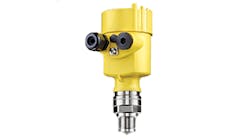You only know what you know. And, if you don’t know what you need, then you better find someone who does. In process control and automation, this means capturing veteran engineers’ knowledge before they’re laid off, retire or expire. When unusual events occur, there’s just no substitute for an eyewitness on the ground, and there’s no substitute for the lessons they learn and the hard-won knowledge they can pass along.
In fact, practical experience is doubly valuable, not just because so many veterans are retiring, but also because control and automation’s increasing success and pervasiveness is making many exceptional events increasingly rare. As a result, many of today’s engineers don’t know what to do when some really unusual problem occurs because they’re never seen it before, and the guy who did see it is long gone.
For example, MeadWestvaco in Covington, Va., makes about 17,000 tons of activated carbon annually, using sawdust and phosphoric acid in an activating kiln process, which requires thorough checking and maintenance of hundreds of temperature and pressure sensors. The firm uses ISO-certified thermocouples from JMS Southeast in Statesville, N.C.
Mark Brackenridge, MeadWestvaco’s electrical and instrumentation (E&I) supervisor, says it’s crucial to listen to older engineers, technicians and operators. “We always try to pay attention to the older guys because they’ve seen and done so many things and dealt with so many exceptional situations that you can always learn from them,” explains Brackenridge. “Testing in the shop is one thing, but it’s always a different ball game in the field because anything can happen there.”
Despite the need for experienced sensor technicians, however, JMS’ general manager, Frank Johnson, reports that many users can’t find technicians trained in implementing and maintaining traditional temperature and pressure sensors. “So users spend gobs of money on fancy transmitters that they can calibrate and modify, but they don’t pay enough attention to sensors that may have drifted or are about to go bad,” he says.
Johnson adds that users need to know how these older technologies can benefit their operations. “Thermocouples and RTDs are exposed to a lot of heat, and the steel tubes they’re in can deteriorate quickly,” explains Johnson. “However, we now have special materials to avoid this and help sensors last four times longer, but most users never specify using them. We try to educate and do lunch-and-learns, but a lot of this doesn’t seem to get across.”
Similarly, Johnson adds that DuPont’s Kapton insulation for wires is now more impermeable than the traditional Teflon or fiberglass, but it’s rarely specified either.
Why is this so?
“Interest in the fundamentals of sensors has decreased in the last 30 years as people have retired,” says Johnson. “This is why some users ask us for transmitters with 0.10% accuracy and then buy a sensor that’s off by up to 10 °F at different temperature levels. People know about transmitters, but they don’t know about sensors, and so price pressure wins because users think all components are the same. If a thermocouple costs $100, and the rest of the system control panel costs $10,000, they think why should they care about the lower cost item? They don’t realize how the thermocouple can affect their whole system.”
To help users learn about thermocouple and RTD basics, JMS produced a three-hour DVD of its training course. Johnson also recommends Industrial Temperature Measurement by Tom Kerlin and Bob Shepard, previously published by ISA. He also suggests that user consult the appendices to ASTM’s standards for thermocouples, RTDs and testing devices.
There are a couple of ways to get crucial know-how. The easy way is to take in what voices of experience have to offer. The hard way is by reinventing the wheel. The choice is up to each of us.





